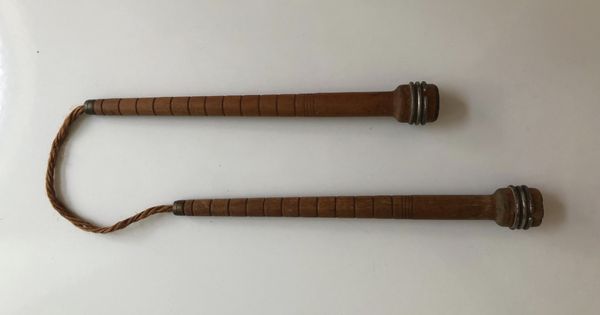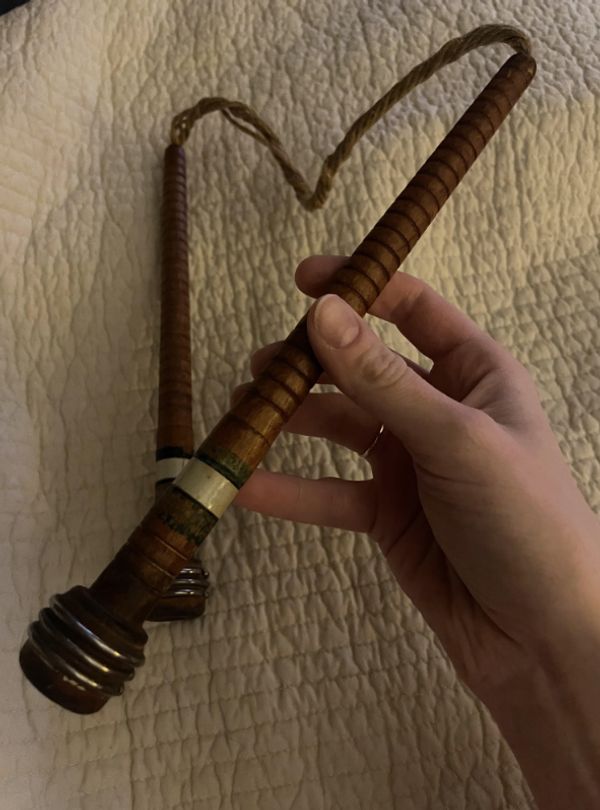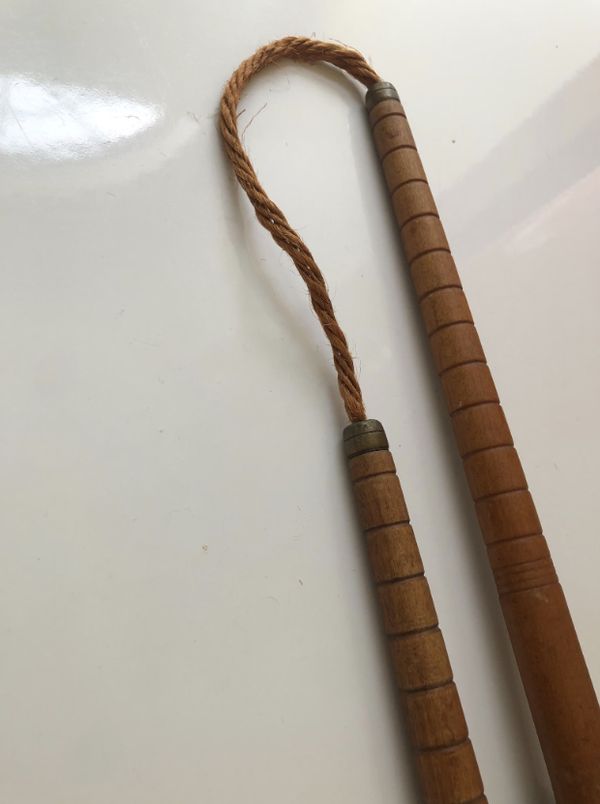
Are you fascinated by the charm of vintage items? Do you appreciate the history and beauty they bring to a home? Then textile bobbins might just be the hidden gems you’re looking for!
Textile bobbins are small spools or cylinders that were used to wind thread or yarn in the past. They were an essential part of the textile production process and played a crucial role in ensuring the quality of fabrics. The bobbins featured in the image above have a unique construction, with metal accents and a reflective stripe, indicating their use in industrial settings.

These bobbins were typically made from durable wood, making them perfect for the wear and tear of textile mills. The metal accents not only reinforced their structure but also guided the thread or yarn as it was wound. This combination of materials and design made these bobbins reliable tools for textile workers.
But what about the jute string connecting the two bobbins? It served multiple purposes in the textile industry. Firstly, it made it easier to store and organize the bobbins, ensuring they weren’t lost or separated. In large textile mills, organization was key, and this system helped keep pairs of bobbins together. Secondly, the connected bobbins could be hung on hooks or rods, making them portable within the mill. Workers could easily carry several sets or have them conveniently placed near their workstations. Lastly, the jute string could be used for identification, allowing workers to mark specific batches or types of threads or yarns.

In the textile production process, these bobbins were placed onto a bobbin rod on spinning or weaving machines. Thanks to their smooth surfaces and metal guides, the thread or yarn would be drawn evenly and without snags. This ensured that the textiles produced were of consistent quality, free from defects caused by irregular tension or supply.
While modern textile production has moved on to more efficient and automated processes, vintage textile bobbins like these hold a special place in our hearts. They are not only collected for their historical value and beauty but also repurposed into unique home decor items. Imagine using them as candlestick holders or incorporating them into artistic installations that celebrate the rich heritage of the textile industry.
Displaying these bobbins in your home or a museum setting adds to their aesthetic value. The jute string connecting them serves as a visual reminder of their original function and the interconnectedness of the textile production process. It’s an opportunity to appreciate the craftsmanship and ingenuity of the past.
So if you’re a fan of vintage treasures that exude elegance and have a story to tell, consider adding textile bobbins to your collection. Their charm and historical significance will surely captivate you and your guests.




